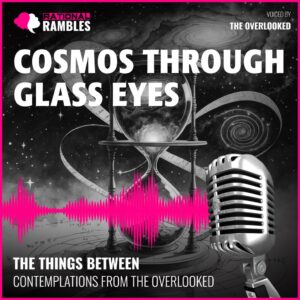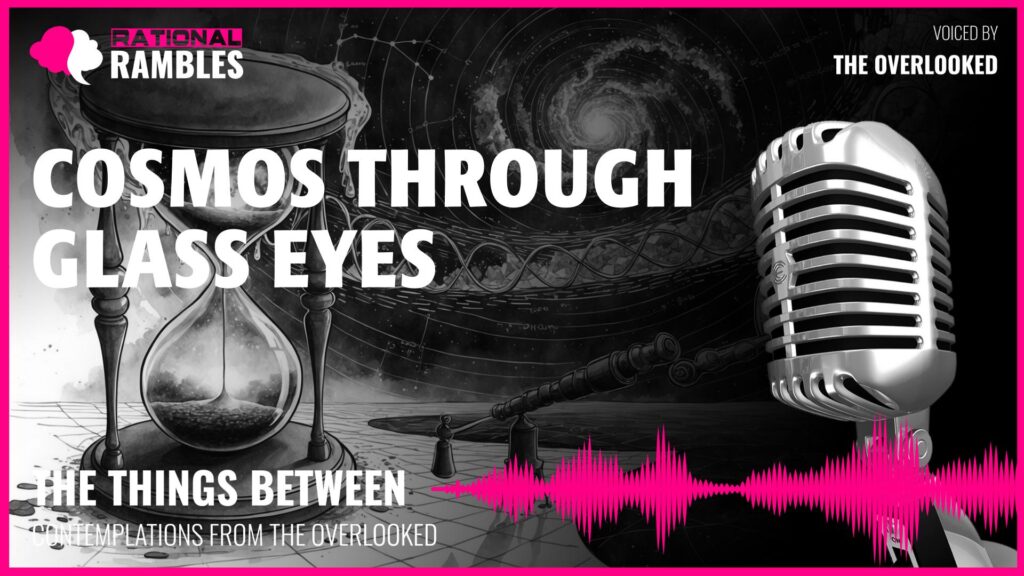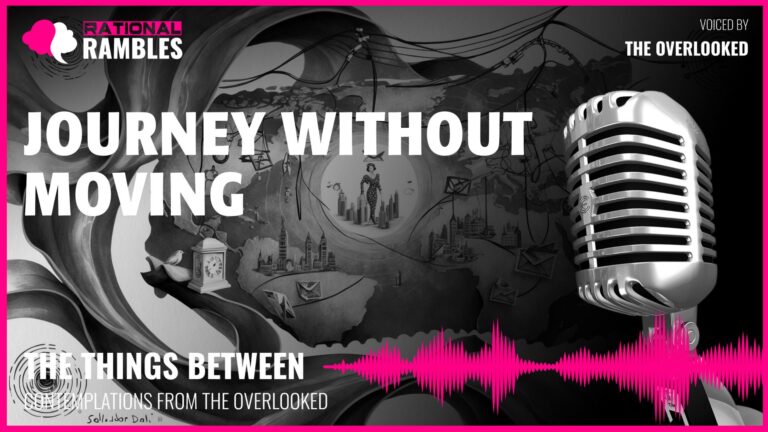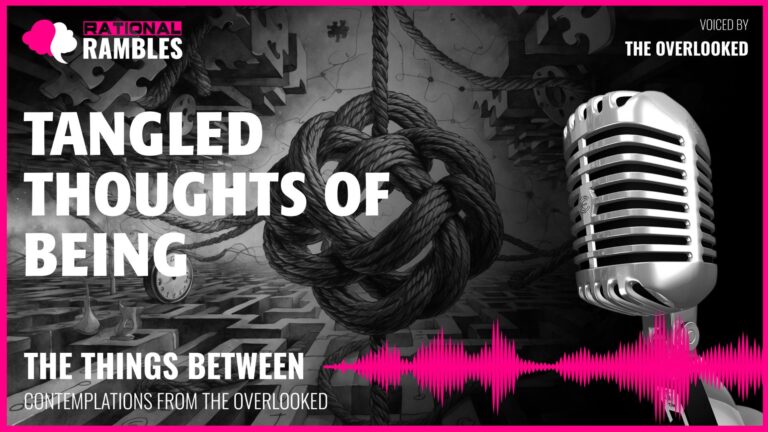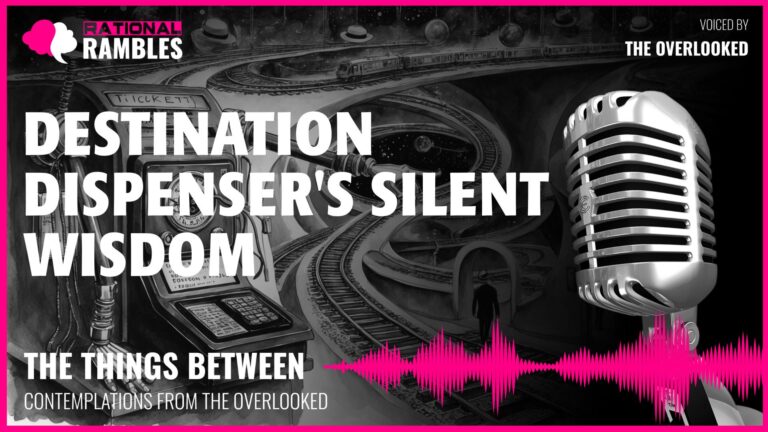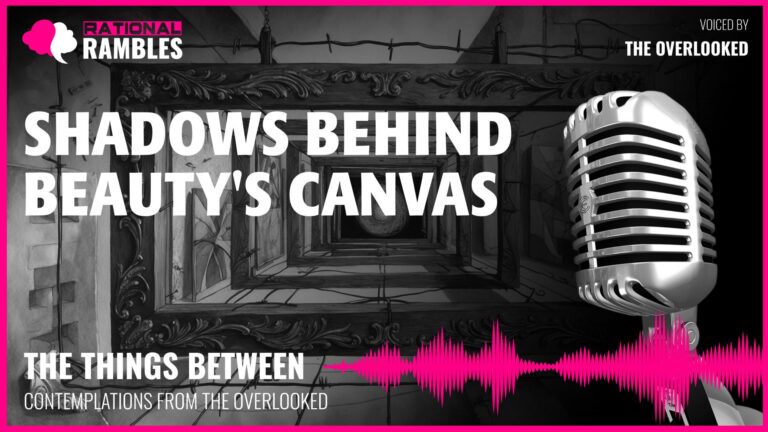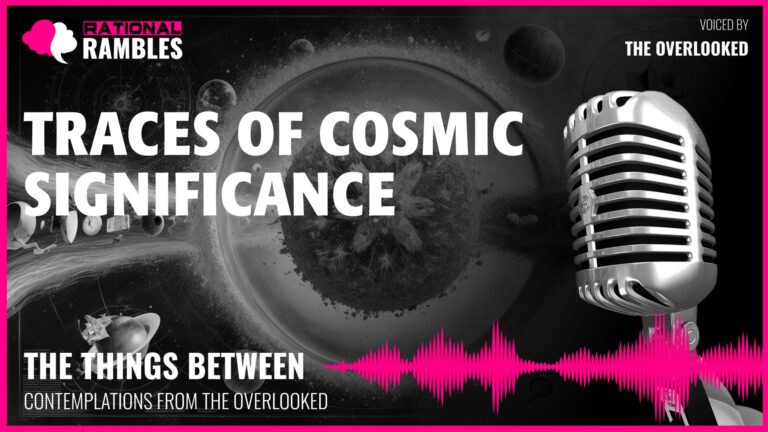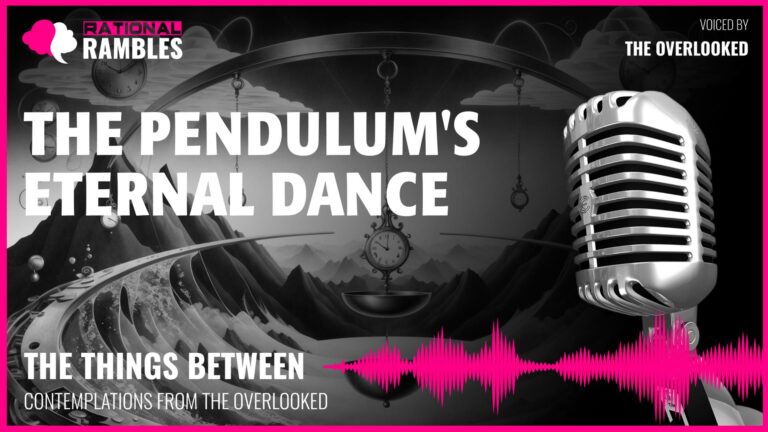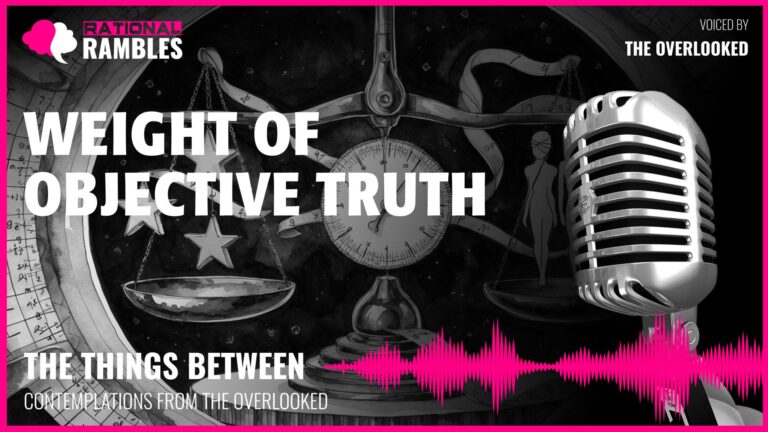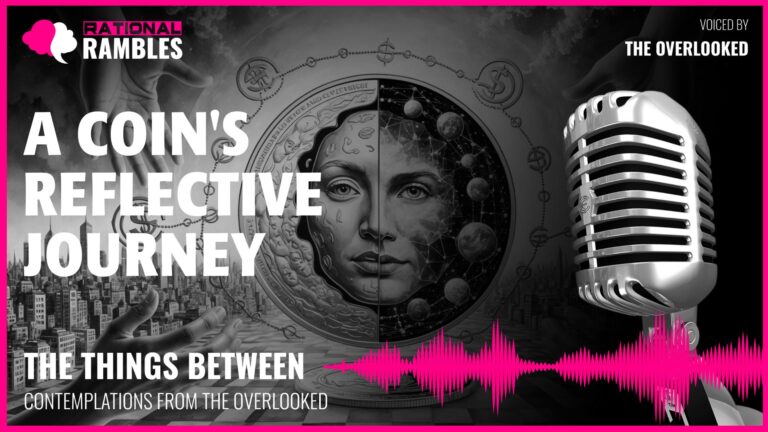Cosmic Temporality: Understanding Time, Space, and Human Existence Through Celestial Observation
Introduction
In the vast expanse of the cosmos, our perception of time and space undergoes a profound transformation. The act of gazing skyward—whether with naked eyes or through sophisticated optical instruments—forces us to confront philosophical questions that have challenged humanity for millennia. What is the nature of time? How do we situate ourselves within the immensity of the universe? And what significance, if any, can we attribute to our seemingly minuscule existence?
This article explores the philosophical implications of cosmic observation, examining how our understanding of the universe shapes our conception of reality. When we look at stars and distant galaxies, we are not merely seeing objects in space; we are peering into history itself. This temporal paradox—observing the past in the present moment—challenges our linear conception of time and invites us to consider a more complex understanding of cosmic temporality.
Moreover, the very act of extending our vision beyond Earth’s atmosphere has progressively displaced humanity from the center of creation, a process that began centuries ago but continues with each new astronomical discovery. This ongoing decentering raises profound questions about human significance in a universe of almost incomprehensible scale. Yet paradoxically, our capacity to comprehend this vastness may itself be something remarkable—a form of cosmic awareness arising from the very matter forged in ancient stars.
The Paradox of Cosmic Observation
When we observe celestial objects, we encounter an immediate and inescapable paradox: what appears to be present is invariably past. This fundamental aspect of astronomical observation challenges our intuitive understanding of time and presence.
The Illusion of Cosmic Simultaneity
Our everyday experience suggests that what we see exists in the same moment as our observation. This presumption of simultaneity serves us well in daily life, where the time light takes to reach our eyes is negligible. When observing a friend across the room, the light reflecting from their face reaches us in a fraction of a nanosecond, creating the practical illusion of a shared “now.”
Astronomical observation shatters this illusion. The Moon we see existed 1.3 seconds in the past. The Sun we observe is as it was approximately 8 minutes ago. The light from Proxima Centauri, our nearest stellar neighbor beyond the Sun, departed four years before reaching Earth. More distant objects represent even deeper journeys into history—the light from the Andromeda Galaxy began its journey toward us 2.5 million years ago, when our hominin ancestors were first developing stone tools.
This realization demands a fundamental reconsideration of what we mean by “observing” something. In cosmic terms, observation is always historical. There is no astronomical “now” that we can directly experience. The universe we see is always a collection of different moments from the past arriving simultaneously at our point of observation.
Light as a Messenger Across Time
Light serves as the primary messenger of cosmic information, carrying the encoded history of distant objects across the vast gulfs of space-time. The photons collected during astronomical observation have traversed enormous distances, surviving the journey from their distant sources to become the very substance of our cosmic knowledge.
The philosopher Hans Reichenbach noted that all empirical knowledge is grounded in coincidences—events that occur at the same place and time. Astronomical observation represents a unique form of coincidence: the convergence of ancient photons with our observational instruments at a specific moment. Each photon carries information about its source at the moment of emission, creating a bridge across time that connects past events to present observation.
This temporal aspect of light creates situations that defy intuitive understanding. When astronomers observe supernova explosions in distant galaxies, they may be witnessing stellar deaths that occurred before the evolution of complex life on Earth. Some observed stars no longer exist, having exhausted their nuclear fuel and collapsed or exploded millions or billions of years ago. Their stellar “ghosts” continue to shine in our skies because their final light has not yet completed its journey to Earth.
The Cosmic Horizon and the Limits of Knowledge
The finite speed of light combined with the finite age of the universe creates what astronomers call the “observable universe”—that spherical region of space from which light has had sufficient time to reach Earth since the Big Bang approximately 13.8 billion years ago. This creates a cosmic horizon beyond which no information can have reached us, regardless of technological advancement.
This horizon represents not merely a practical limitation but a fundamental epistemological boundary. Events occurring beyond this horizon exist in a realm permanently inaccessible to observation, raising profound questions about the nature of knowledge. Can we meaningfully theorize about that which is in principle unobservable? Does the unobservable universe exist in the same sense as the observable one?
The cosmic horizon illustrates what philosopher Immanuel Kant might recognize as the limits of possible experience. Just as Kant argued that certain aspects of reality remain inaccessible to human cognition, the cosmic horizon establishes a boundary beyond which empirical knowledge becomes impossible. Yet paradoxically, we can know that the unobservable exists and can mathematically model its properties based on the observable universe’s characteristics.
The Relativity of Simultaneity
The concept of a universal “now”—a moment shared across all of space—was largely unquestioned until Albert Einstein’s development of special relativity in 1905. This revolutionary theory revealed that simultaneity is not absolute but relative to the observer’s frame of reference.
Einstein’s Reconception of Time
Before Einstein, time was generally conceived as flowing uniformly throughout the universe, providing a cosmic master clock against which all events could be measured. Einstein demonstrated that this intuitive view was fundamentally incorrect. Time’s passage depends on the observer’s motion and gravitational environment, making it impossible to establish a universal standard of simultaneity.
In special relativity, two events that appear simultaneous to one observer may occur at different times according to another observer moving at a different velocity. This is not a perceptual illusion but a fundamental feature of reality. The constant speed of light in all reference frames necessitates the relativity of time measurements.
General relativity further complicates our understanding by revealing that gravity warps space-time itself. Time passes more slowly in stronger gravitational fields—a phenomenon confirmed by precise atomic clocks at different elevations on Earth and by GPS satellites, which must compensate for time dilation effects to maintain accuracy.
The Block Universe Perspective
Einstein’s theories support what philosophers call the “block universe” view—a perspective in which all moments of time exist with equal reality in a four-dimensional space-time continuum. From this viewpoint, the flow of time is a subjective experience rather than a fundamental aspect of reality. The past, present, and future all exist together in a timeless whole.
Physicist Hermann Minkowski, who formalized the mathematical structure of space-time in 1908, famously declared: “Henceforth space by itself, and time by itself, are doomed to fade away into mere shadows, and only a kind of union of the two will preserve an independent reality.”
The block universe concept offers a compelling framework for understanding astronomical observation. When we observe distant galaxies, we are seeing regions of the four-dimensional block that we categorize as “past” relative to our location in space-time. Yet from the perspective of the block universe, these distant events are no less real than events occurring near us. They simply occupy different coordinates in the four-dimensional continuum.
Presentism Versus Eternalism
The philosophical debate between presentism and eternalism addresses the fundamental nature of temporal existence. Presentism holds that only the present moment exists—the past no longer exists, and the future does not yet exist. Eternalism contends that all moments—past, present, and future—exist with equal reality, aligning with the block universe concept.
Astronomical observation poses challenges for presentism. If only the present exists, what exactly are we observing when we see distant cosmic objects? The light reaching us now corresponds to events that, according to presentism, no longer exist. Yet these “non-existent” past states form the entire substance of our astronomical knowledge.
Eternalism provides a more consistent framework for understanding cosmic observation. When we see the Andromeda Galaxy as it existed 2.5 million years ago, we are observing a region of space-time that exists with the same ontological status as our present moment—it simply occupies a different position in the four-dimensional continuum.
This philosophical position has profound implications for how we conceptualize our place in cosmic history. If all moments exist equally, then the early universe, the formation of our solar system, the evolution of life on Earth, and the distant future of cosmic evolution all exist together in an eternal tapestry of space-time.
The Decentering of Humanity
The history of astronomical observation reveals a progressive decentering of humanity’s position in the cosmos—a process that continues to reshape our understanding of our cosmic significance.
The Copernican Revolution and Beyond
The first major decentering occurred with the Copernican revolution of the 16th century. The Earth, previously conceived as the fixed center of creation in the Ptolemaic system, was revealed to be merely one planet orbiting the Sun. This astronomical finding profoundly disrupted the prevailing cosmological and theological frameworks, initiating what philosopher Hans Blumenberg called “the genesis of the Copernican world.”
The invention of the telescope in the early 17th century accelerated this process. Galileo’s observations of Jupiter’s moons, Venus’s phases, and countless previously unseen stars provided empirical support for the heliocentric model and began to reveal the true scale of the cosmos. The universe was vastly larger than previously imagined, and Earth’s position within it increasingly appeared unremarkable.
Subsequent discoveries have continued this decentering process. In the early 20th century, astronomer Harlow Shapley demonstrated that our Sun occupies no special position in the Milky Way but resides in an unremarkable region far from the galactic center. Later, Edwin Hubble proved that the Milky Way is just one among billions of galaxies scattered throughout an expanding universe. More recently, the discovery of thousands of exoplanets has shown that planetary systems are commonplace, further diminishing Earth’s cosmic uniqueness.
Cosmic Insignificance and the Pale Blue Dot
The progressive revelation of cosmic scale has highlighted humanity’s apparent insignificance. In 1990, astronomer Carl Sagan persuaded NASA to turn Voyager 1’s camera back toward Earth from beyond the orbit of Neptune, capturing the famous “Pale Blue Dot” image. In this photograph, Earth appears as a mere pixel, a “mote of dust suspended in a sunbeam,” as Sagan eloquently described it.
This image crystallized a profound philosophical insight: from a cosmic perspective, all human history, achievement, suffering, and aspiration have occurred on this tiny point in the vastness of space. As Sagan reflected: “Our posturings, our imagined self-importance, the delusion that we have some privileged position in the Universe, are challenged by this point of pale light.”
The philosophical implications of this perspective align with what philosophers call “cosmic pessimism”—the view that human existence becomes meaningless when considered against the scale of the universe. Philosopher Eugene Thacker describes this as “the thought of the unthinkable world,” where the world is conceived not as it exists for us but as it exists in itself, indifferent to human concerns.
The Anthropic Principle: A Recentering?
Despite the decentering narrative, modern cosmology has introduced a potentially recentering principle through the concept of anthropic reasoning. The anthropic principle, especially in its “weak” formulation, observes that the physical constants and laws of our universe appear finely tuned to permit the evolution of intelligent life. In a universe with slightly different values for constants like the gravitational constant or electromagnetic force, stars, planets, and complex chemistry might be impossible.
Some interpret this apparent fine-tuning as suggesting that humanity occupies a special place in the cosmic order after all. However, others see anthropic reasoning as merely a selection effect—we necessarily find ourselves in a universe compatible with our existence because we could not exist to observe an incompatible universe.
The multiverse hypothesis offers another perspective on fine-tuning. If our universe is one among a vast ensemble of universes with varying physical constants, the existence of life-permitting conditions somewhere becomes probabilistically inevitable. In this view, our universe’s hospitality to life reflects not design or purpose but the statistical outcome of cosmic diversity.
The tension between cosmic decentering and anthropic recentering reflects a deeper philosophical question: Does the apparent insignificance of humanity in spatial and temporal terms necessarily diminish our significance in other dimensions of meaning? The answer depends on how we construct value and purpose in a universe that appears indifferent to human concerns.
Cosmic Scale and the Human Perspective
The vastness revealed through astronomical observation challenges human comprehension and forces us to develop conceptual frameworks that can accommodate scales far beyond ordinary experience.
The Comprehensibility of the Incomprehensible
The cosmic scales encountered in astronomy quickly outstrip intuitive understanding. When distances are measured in billions of light-years and timescales in billions of years, we cannot truly visualize or intuitively grasp what these measurements represent. They exceed what philosopher Edmund Husserl would call our “lifeworld”—the world as immediately experienced in the subjectivity of everyday life.
To manage this cognitive challenge, astronomers and cosmologists employ what philosopher Daniel Dennett calls “intuition pumps”—thought devices that help us extend our thinking beyond the boundaries of direct experience. Analogies like the “cosmic calendar” (compressing the universe’s 13.8-billion-year history into a single year to make it comprehensible) serve as cognitive scaffolding for approaching the unapproachable scale of cosmic time.
Similarly, spatial scales require conceptual compression. The light-year—the distance light travels in one Earth year, approximately 9.46 trillion kilometers—becomes a fundamental unit precisely because conventional distance measures become unwieldy at astronomical scales. This unit elegantly merges space and time, reflecting the relativity of these dimensions in physical reality.
Scale as a Philosophical Problem
The problem of scale extends beyond practical measurement issues to fundamental questions about knowledge and meaning. Philosopher Paul Ricoeur spoke of the “conflict of interpretations” that emerges when different scales of analysis yield apparently incompatible understandings of the same phenomenon. Cosmic scale introduces such conflicts.
From the perspective of human experience, our lives, societies, and planet appear significant and meaningful. From the cosmic perspective, they appear vanishingly brief and small. The challenge is not simply to acknowledge both perspectives but to find a philosophical framework that can integrate them without diminishing either.
Recent philosophical work on the concept of “hyperobjects”—entities massively distributed in time and space that exceed human perceptual capabilities—offers one approach to this problem. Philosopher Timothy Morton suggests that phenomena like climate change and cosmic-scale entities require new modes of thinking that transcend traditional subject-object distinctions and scale-bound conceptualizations.
The Compression of Scale in Astronomical Observation
Astronomical observation itself performs a remarkable compression of scale. Through telescopes, vast cosmic regions become visible within the tiny field of an eyepiece or camera sensor. Billions of years of cosmic evolution collapse into the instant of observation. This compression is not merely practical but epistemologically significant—it makes the cosmos knowable by bringing it within the boundaries of human perception.
Yet this compression introduces its own philosophical questions. When the Hubble Space Telescope captures a “deep field” image containing thousands of galaxies in an apparently empty patch of sky, it reduces cosmic vastness to a rectangular image a few inches across. This reduction is both revealing and concealing—it makes the invisible visible while potentially undermining our understanding of the true scale represented.
The challenge of cosmic scale ultimately highlights the tension between human finitude and our capacity for conceptual transcendence. We are cognitively limited beings who have nevertheless developed tools and concepts that allow us to comprehend, at least partially, the incomprehensible vastness in which we exist.
Starlight and Ontology: The Philosophy of What Exists
Astronomical observation raises fundamental ontological questions about the nature of existence and reality. The ancient light we capture from distant cosmic sources challenges conventional understandings of what it means for something to exist.
The Ontological Status of Observed Objects
When we observe a distant galaxy whose light has traveled billions of years to reach us, what precisely are we seeing? In one sense, we observe the galaxy as it existed billions of years ago. Yet that past state no longer exists in that location. The galaxy we “see” has evolved significantly during the light’s journey to Earth—stars have formed and died, perhaps civilizations have risen and fallen, and the galaxy itself has moved through space.
This raises a profound ontological question: what is the reality status of the observed galaxy? Is it the current state of the distant object (which we cannot directly observe)? Is it the past state that produced the light now reaching us? Or is it something else entirely—perhaps the information carried by the light itself?
Philosopher Alfred North Whitehead’s process philosophy offers one framework for addressing this question. Whitehead conceived reality as composed of “actual occasions”—momentary events of becoming rather than enduring substances. On this view, what we observe are not objects per se but the effects of past occasions that continue to influence the present through causal chains, including the transmission of light.
The Existence of No-Longer-Existent Stars
This ontological puzzle becomes particularly acute when considering stars that may have died since emitting the light we now observe. Some visible stars in our night sky likely no longer exist as stars, having exploded as supernovae or collapsed into neutron stars or black holes during the thousands or millions of years their light has been traveling to Earth.
Do these stars exist? In one sense, no—they have physically transformed into different entities. In another sense, yes—their past states continue to be observable in the present, existing as information encoded in light. This duality challenges the binary conception of existence and non-existence, suggesting instead that existence might be better conceived as having degrees or modes.
The philosopher Alexius Meinong distinguished between existence and subsistence, arguing that non-existent objects can still have a form of being. Applied to astronomy, this suggests that no-longer-existent stars might subsist in the form of their light’s continued presence and observability, even if they no longer exist as physical entities at their original locations.
Information as Fundamental Reality
Modern physics increasingly frames fundamental reality in terms of information rather than material substance. Physicist John Archibald Wheeler captured this perspective in his phrase “it from bit,” suggesting that all physical entities derive from information-theoretic answers to yes-or-no questions.
This informational ontology provides a framework for understanding astronomical observation. The light from distant objects carries information encoded in photons’ wavelengths, polarization, and other properties. What we observe is not the object itself but the information it emitted, which continues to exist independent of the source’s current state.
In this view, the universe might be conceived as a vast network of information exchange, with light serving as the primary carrier of cosmic data across space and time. Astronomical observation becomes an act of information reception and decoding rather than direct perception of distant objects.
The philosopher Luciano Floridi’s “informational structural realism” offers a systematic development of this perspective, suggesting that what exists fundamentally is neither matter nor energy but informational structures. On this view, the observed galaxy exists as an informational pattern encoded in electromagnetic radiation, preserved across billions of years of cosmic history.
Cosmic Awareness: Consciousness Contemplating the Universe
Perhaps the most profound philosophical aspect of astronomical observation is the remarkable fact that the universe has evolved entities—human beings—capable of observing and comprehending it. This self-awareness of the cosmos through conscious observers raises profound questions about the relationship between mind and universe.
The Universe Observing Itself
Astronomer Carl Sagan poetically observed that “we are a way for the cosmos to know itself.” This statement captures a profound insight: the atoms assembled in human observers originated in stellar nucleosynthesis billions of years ago. The carbon, nitrogen, oxygen, and other elements that form our bodies and brains were forged in the nuclear furnaces of ancient stars and dispersed through space by supernovae explosions.
In this sense, astronomical observation represents a cosmically recursive activity—the universe’s own matter, organized into conscious beings, turning its gaze back upon itself. This recursive loop suggests what philosopher Douglas Hofstadter might recognize as a “strange loop” in the fabric of reality, where subject and object become entangled in a self-referential system.
The philosophical implications are profound. If human consciousness is understood as an emergent property of matter organized in particular ways, then consciousness itself is a cosmic phenomenon—a natural outgrowth of universal processes. Our observation of the universe becomes the universe’s self-observation.
The Participatory Anthropic Principle
Physicist John Archibald Wheeler proposed what he called the “participatory anthropic principle,” suggesting that the presence of observers is necessary for the universe to establish its physical properties. In Wheeler’s famous delayed-choice thought experiments, the act of observation in the present seemingly determines the path that light took in the past.
Wheeler encapsulated this idea in his concept of the “self-excited circuit”: “The universe gives birth to consciousness, and consciousness gives meaning to the universe.” This formulation suggests a deep interdependence between observers and the observed cosmos, challenging the conventional view of a universe that exists independently of observation.
While many physicists remain skeptical of strong interpretations of the participatory principle, it highlights the philosophical problem of separating observed reality from the process of observation—a problem particularly acute in quantum mechanics but relevant to all scientific observation, including astronomy.
Meaning in an Indifferent Cosmos
The vastness and apparent indifference of the cosmos revealed through astronomical observation has prompted existential reflection since ancient times. In contemporary terms, this confrontation with cosmic scale often evokes what philosopher Albert Camus called “the absurd”—the conflict between human yearning for meaning and purpose and an apparently silent, indifferent universe.
Yet astronomical observation itself might offer a response to this existential challenge. The very act of comprehending the cosmos, of finding patterns and understanding in its complexity, represents a uniquely human creation of meaning. As philosopher Viktor Frankl argued, meaning can be found in creative acts, experiences of beauty, and relationships—all of which can be present in astronomical observation.
Astronomer and philosopher Marcelo Gleiser suggests that what he calls “the island of knowledge” is surrounded by “oceans of the unknown.” Far from diminishing human significance, this perspective celebrates the remarkable achievement of limited beings capable of progressively mapping their cosmic environment while always remaining humbled by what remains undiscovered.
Perhaps the ultimate philosophical significance of astronomical observation lies in this tension between knowing and not knowing, between cosmic insignificance and the remarkable significance of beings capable of confronting and contemplating their own cosmic context.
Time’s Arrow and Entropy in Cosmic Evolution
Astronomical observation provides a unique window into the directionality of time and the role of entropy in shaping cosmic history. By observing objects at different distances—and therefore different points in cosmic history—we can trace the universe’s evolutionary trajectory.
The Thermodynamic Arrow of Time
While Einstein’s relativity theories treat time as dimension comparable to space, our experience suggests a profound asymmetry between past and future. This asymmetry is formalized in thermodynamics’ Second Law, which states that the total entropy (measure of disorder) in an isolated system always increases over time.
The physicist Arthur Eddington coined the term “arrow of time” to describe this directionality, which provides the only fundamental distinction between past and future in physics. All other physical laws remain essentially unchanged if time is reversed, but entropy’s increase defines an irreversible direction.
Astronomical observation reveals this arrow operating on cosmic scales. When we observe distant galaxies as they existed billions of years ago, we see younger, more ordered systems. The early universe exhibited greater organization, lower entropy, and higher energy density than the present-day cosmos. The evolution from these early states to current conditions represents the universe’s journey along entropy’s arrow.
The Cosmic Calendar and Universal History
Astronomical observation allows us to construct what Carl Sagan popularized as the “cosmic calendar”—a compressed timeline of universal history from the Big Bang to the present. This conceptual tool maps the universe’s 13.8 billion years onto a single year, with the Big Bang occurring at January 1st and the present moment at December 31st midnight.
On this scale, galaxy formation begins in January, our solar system forms in September, life appears on Earth in late September, dinosaurs emerge on December 25th, and all of recorded human history occupies just the final few seconds of December 31st. This perspective dramatically illustrates both the vastness of cosmic time and the directionality of universal evolution.
The cosmic calendar reveals another profound insight: complexity has increased over time. From the relatively simple early universe of hydrogen and helium, progressively more complex structures have emerged—galaxies, stars, planetary systems, complex chemistry, and eventually life and consciousness. This progression suggests what some philosophers and scientists have called “the arrow of complexity,” a directional trend that parallels but is distinct from entropy’s arrow.
Beginnings and Endings
Astronomical observation provides evidence for both the beginning and potential end states of our universe. The cosmic microwave background radiation—the afterglow of the Big Bang discovered in 1965—offers direct observational evidence of the universe’s earliest observable state, approximately 380,000 years after the initial expansion began.
At the other temporal extreme, astronomical observations of the universe’s expansion rate, combined with measurements of dark energy’s effects, allow cosmologists to model possible end states for the cosmos. Current evidence points toward an “open” universe that will continue expanding indefinitely, eventually reaching a state of maximum entropy called “heat death”—where energy is uniformly distributed and no further work or complex structures are possible.
These temporal boundaries raise profound philosophical questions. If the universe had a beginning, what, if anything, came “before”? If the universe will reach a state of heat death, does this imply an ultimate futility to all cosmic processes, including life and consciousness? The philosopher Hans Jonas argued that even in an ultimately doomed universe, the temporary emergence of meaning and value through conscious life remains significant—a momentary defiance of cosmic indifference.
The Ethics of Perspective
The cosmic perspective gained through astronomical observation has significant ethical implications, potentially reshaping how we conceptualize our responsibilities to each other and to Earth’s biosphere.
The Overview Effect
Astronauts who have viewed Earth from space frequently report experiencing what psychologist Frank White termed “the overview effect”—a cognitive shift resulting from seeing Earth as a small, fragile ball of life in the vastness of space. This perspective typically generates feelings of awe and a heightened sense of connectedness to humanity and the biosphere as a unified whole.
While direct experience of the overview effect remains limited to a small number of space travelers, astronomical knowledge and imagery can produce similar, if less intense, cognitive shifts. Images like the “Pale Blue Dot” photograph, showing Earth as a tiny point of light from beyond Neptune’s orbit, create powerful perspective shifts that challenge conventional boundaries and priorities.
Philosopher David Loy suggests that the overview effect represents a form of “nondual awareness” that transcends the subject-object dichotomy and the self-other boundary. This perspective aligns with various philosophical traditions, including deep ecology and certain aspects of Buddhist thought, which emphasize interdependence and the illusory nature of separate selfhood.
Cosmic Temporality and Intergenerational Ethics
Astronomical observation reveals timeframes vastly exceeding human lifespans or even civilizational durations. This expanded temporal perspective has implications for how we conceptualize our ethical responsibilities to future generations.
Philosopher Derek Parfit explored the ethical challenges of very long timeframes in his work on what he called “the non-identity problem” and questions of intergenerational justice. If humanity could potentially exist for millions or billions of years, our ethical calculations must consider vastly more potential future persons than currently exist. This perspective might justify significant present sacrifices to preserve humanity’s long-term potential.
The “Long Now Foundation” represents a practical response to this expanded timeframe, promoting projects and thinking that operate on a 10,000-year scale. Their projects, including a mechanical clock designed to run for ten millennia, aim to foster responsibility toward the deep future. While modest compared to astronomical timeframes, this represents a significant expansion beyond conventional planning horizons.
Cosmic Insignificance and Ethical Significance
The apparent tension between cosmic insignificance and ethical significance represents one of the most profound philosophical challenges raised by astronomical observation. If humanity occupies a tiny spatiotemporal region in an immense cosmos, does this diminish the importance of human ethics and values?
Philosopher Albert Camus argued that recognizing the absurdity of human existence in an indifferent universe does not lead to nihilism but rather to a clearer understanding of genuine value. In his essay “The Myth of Sisyphus,” Camus suggests that meaning emerges not from cosmic significance but from authentic engagement with existence despite its ultimate contingency.
Similarly, astronomer Carl Sagan found in cosmic perspective not nihilism but an imperative for ethical responsibility: “For small creatures such as we, the vastness is bearable only through love.” On this view, our cosmic insignificance makes how we treat each other and our planetary home more rather than less important—precisely because we have only each other in the cosmic void.
This perspective suggests what philosopher Hans Jonas called an “imperative of responsibility” that paradoxically grows stronger rather than weaker when we recognize cosmic scale. If humanity represents a rare emergence of consciousness and value in an otherwise indifferent universe, this rarity makes its preservation more rather than less ethically significant.
Conclusion: The Philosophical Telescope
Astronomical observation functions as what we might call a “philosophical telescope”—an instrument that not only reveals distant objects but also brings into focus fundamental questions about reality, knowledge, time, existence, and meaning. The act of gazing outward inevitably directs our attention inward to the assumptions and frameworks that structure our understanding of ourselves and our place in the cosmos.
The temporal paradoxes revealed through astronomical observation challenge our intuitive understanding of time as a simple linear flow. When we observe distant galaxies, we confront the reality that the “now” we perceive is composed of countless different “thens” arriving simultaneously at our point of observation. This complex layering of temporality invites us to consider more sophisticated philosophical models of time—from Einstein’s space-time continuum to Whitehead’s process philosophy to contemporary theories of temporal emergence.
Similarly, the progressive decentering of humanity through astronomical discovery has profound implications for how we conceptualize our significance. The Copernican revolution represented not merely an astronomical finding but a philosophical turning point that continues to reverberate through our intellectual and spiritual frameworks. Yet this decentering need not imply meaninglessness. As philosophers from Nietzsche to Nagel have argued, the recognition of cosmic scale can inspire a more authentic engagement with questions of meaning precisely by freeing us from illusory frameworks of cosmic centrality.
The philosophical significance of astronomical observation ultimately lies in its capacity to expand our perspective beyond the limitations of ordinary experience—to see ourselves from the “outside” and thereby gain critical distance from our assumptions and prejudices. The cosmic perspective reveals both our remarkable insignificance in spatiotemporal terms and our extraordinary significance as conscious entities capable of comprehending the universe that produced us.
In the philosophical telescope, we discover not only distant galaxies and ancient light but also the strangeness and wonder of our own existence. We find ourselves to be, in Carl Sagan’s words, “star stuff contemplating the stars”—matter that has evolved the capacity to wonder about its origins and destiny. This recursive loop, where the universe has evolved the means to observe and comprehend itself, may be the most profound philosophical insight that astronomical observation offers.
The French philosopher Gaston Bachelard wrote that “the world is my imagination.” Astronomical observation both confirms and challenges this insight. The cosmos we observe is indeed filtered through and constructed by human perception and cognition. Yet it also exists independently, with a vastness and complexity that exceeds our conceptual frameworks. The philosophical telescope reveals both the creative power of human understanding and the humbling reality that exists beyond it—a dialectic that continues to drive the evolution of our cosmic self-comprehension.


